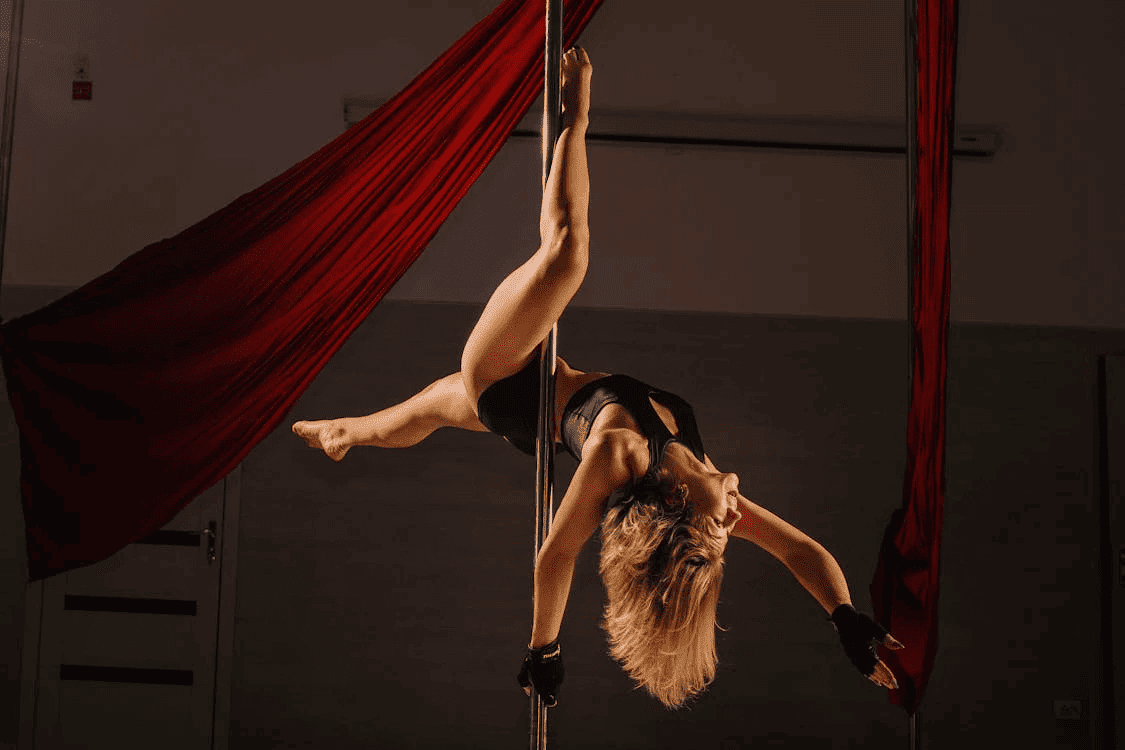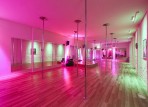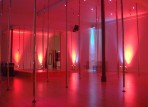Divas blogs
Select studio
SELECT STUDIO
How many types of poles are there for pole dancing?
If you're getting into pole dancing, you might think, “A pole is just a pole, right?” Not quite! Different poles suit different skill levels, training spaces, and personal preferences. Whether you’re training in a pole dancing studio, setting up a practice pole at home, or performing on stage, choosing the right one can really impact your experience. Let’s break it all down so you can figure out which pole suits you best.

Static Pole
A static pole doesn’t rotate—it stays completely still while you grip, climb, and move around it. It’s perfect for beginners because it helps build strength and control. Many pole dancing studios start their classes on static poles to allow students to master the basics before moving on to spinning poles.
✅ Best for: Beginners, strength-building, and learning core techniques.
❌ Not ideal for: Moves that require fluid transitions or spinning tricks.
Spinning Pole
A spinning pole moves with you and adds a graceful, flowing quality to your movements. It’s a favourite for performances because it creates a dynamic, floating effect. Many aerial classes and advanced pole dancing classes introduce spinning poles once students have developed a good foundation. Dynamic spins and elegant transitions are what they’re good for, but they do require a little practice.
✅ Best for: Fluid motion, intermediate to advanced dancers, and creating seamless routines.
❌ Not ideal for: Beginners or anyone who struggles with balance or dizziness.
Removable Pole
If you don’t have the option for a permanent setup, a removable pole is the next best thing. These poles can be installed and taken down in minutes, which makes them perfect for home practice, especially if you're renting and can't drill into the ceiling. You may want to learn how to safely install pole dancing poles at home to ensure stability and prevent accidents while training.
✅ Best for: Home practice, renters, and temporary setups.
❌ Not ideal for: High-intensity tricks or professional studio setups.
Permanent Pole
A permanent pole is bolted securely to the ceiling and floor, making it the safest and most stable option. That’s why they’re the standard in dance studios and professional training spaces. If you’ve got the space and you’re committed to pole dancing long-term, investing in a permanent pole is a solid choice.
✅ Best for: Advanced pole dancers, studio settings, and dedicated home setups.
❌ Not ideal for: Small spaces or temporary setups.
Stage Pole
Ever seen a pole dancer perform at a club or an outdoor event? They were most likely using a stage pole. Unlike traditional poles, this one doesn’t need to be mounted to a ceiling as it comes with its own freestanding base. It’s a lifesaver for performances in places where mounting a pole isn’t possible.
✅ Best for: Performers, travelling dancers, and outdoor events.
❌ Not ideal for: Small spaces or complete beginners.
Double Pole
A double pole setup features two poles positioned close together to allow dancers to switch between them or perform synchronised tricks. Dancers can transition between them, do partner tricks, or even incorporate aerial moves. It’s a big hit in aerial classes and professional routines.
✅ Best for: Partner work, advanced performances, and aerial tricks.
❌ Not ideal for: Solo beginners or limited spaces.
Silicone-Coated Pole
A silicone-coated pole is designed for dancers who need extra grip—whether it’s because they prefer training in leggings or they just want a pole that really holds them in place. Unlike standard poles that rely on skin contact for grip, this one lets you perform tricks even while wearing leggings or long sleeves. That’s why it’s often seen in Chinese pole performances, where grip is essential.
✅ Best for: Dancers who wear full-coverage outfits, need extra grip, or do acrobatic tricks.
❌ Not ideal for: Those who prefer sliding, spinning, or a more fluid movement style.
Brass Pole
A brass pole is one of the grippiest options available, making it a lifesaver in warm, humid weather (which is basically an Australian summer!). If your hands tend to get sweaty, this pole will give you the best hold without constantly reaching for grip aid. This is why many pole dancing studios prefer them. They help dancers maintain their grip without constantly relying on grip aids.
✅ Best for: Pole dancers practicing slow, controlled tricks and holds.
❌ Not ideal for: Those who prefer a slicker surface for smooth spins and slides.
Chrome Pole
Chrome pole is one of the most popular pole dancing studio choice because it provides a good grip and slide balance. It’s a good choice for beginners because it’s easy to work with and widely available. It works really well in moderate climates, but when the weather is warm, or if you have particularly sweaty hands, it can be a little bit slippery. If you have trouble with grip, then learning how sweat affects grip strength will help you pick the right pole and find better grip solutions.
✅ Best for: Dancers of all levels, studio classes, and general training.
❌ Not ideal for: Humid weather or anyone who needs a strong grip.
Stainless Steel Pole
A stainless steel pole is one of the slickest options, meaning it doesn’t have as much natural grip as other poles. It is an excellent choice for dancers who love fluid, fast spins and easy transitions. But because of its low friction, it’s not always the easiest for beginners—if you’re still building your grip strength, this pole might feel a bit too slippery.
✅ Best for: Performers who want a sleek, professional look for stage shows.
❌ Not ideal for: Tricks that require strong hold, like knee hooks or elbow grips.
Ready to Start Your Pole Dancing Journey?
Getting the right pole dancing pole is a big deal, but it’s only the beginning! If you’re ready to learn pole, check out our Online Pole Dancing Academy for expert lessons or look at our pricing options to see what casual class is right for you.
No matter where you train—at home, in a dance studio, or on stage—the right pole can make a huge difference. Play with different poles, find what feels good, and above all else, enjoy being part of a supportive community that helps you grow in your pole dancing journey!








